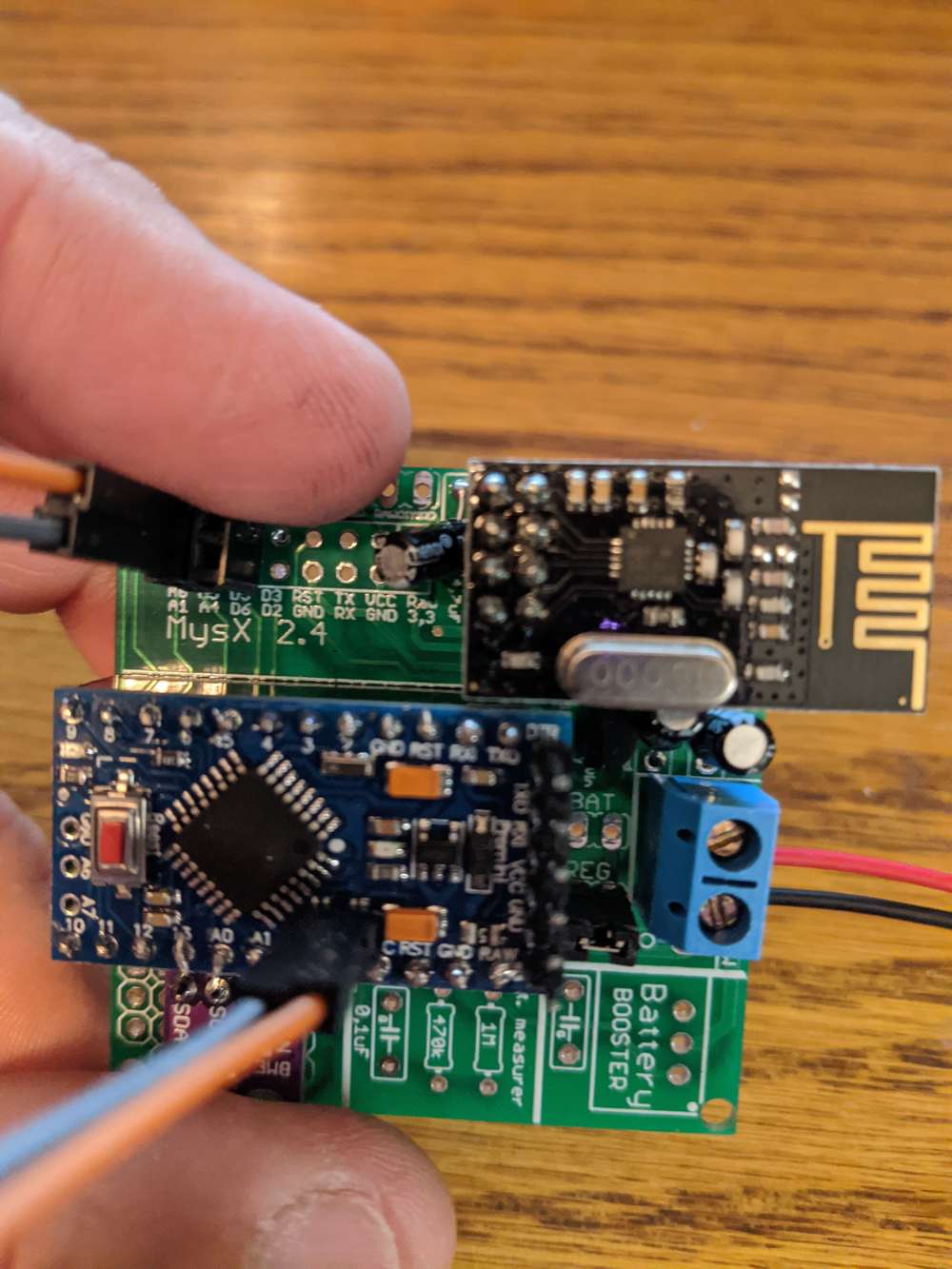I have a node that's sending a find parent request to the gw. The gw receives it and sends back a reply. The node never receives the reply and says parent not found. Any suggestions or help on how to fix/troubleshoot would be appreciated.
Node log:
18098 TSM:FAIL:RE-INIT
18100 TSM:INIT
18106 TSM:INIT:TSP OK
18108 TSM:INIT:STATID=1
18111 TSF:SID:OK,ID=1
18113 TSM:FPAR
18117 ?TSF:MSG:SEND,1-1-255-255,s=255,c=3,t=7,pt=0,l=0,sg=0,ft=0,st=OK:
20124 !TSM:FPAR:NO REPLY
20126 TSM:FPAR
20130 ?TSF:MSG:SEND,1-1-255-255,s=255,c=3,t=7,pt=0,l=0,sg=0,ft=0,st=OK:
22138 !TSM:FPAR:NO REPLY
22140 TSM:FPAR
22145 ?TSF:MSG:SEND,1-1-255-255,s=255,c=3,t=7,pt=0,l=0,sg=0,ft=0,st=OK:
24153 !TSM:FPAR:NO REPLY
24155 TSM:FPAR
24159 ?TSF:MSG:SEND,1-1-255-255,s=255,c=3,t=7,pt=0,l=0,sg=0,ft=0,st=OK:
26166 !TSM:FPAR:FAIL
26167 TSM:FAIL:CNT=2
gw log:
8974 TSF:MSG:READ,1-1-255,s=255,c=3,t=7,pt=0,l=0,sg=0:
8981 TSF:MSG:BC
8984 TSF:MSG:FPAR REQ,ID=1
8989 TSF:CKU:OK,FCTRL
8993 TSF:MSG:GWL OK
12351 !TSF:MSG:SEND,0-0-1-1,s=255,c=3,t=8,pt=1,l=1,sg=0,ft=0,st=NACK:0
13023 TSF:MSG:READ,1-1-255,s=255,c=3,t=7,pt=0,l=0,sg=0:

